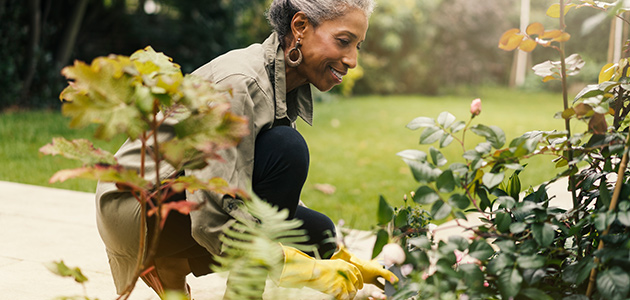
Treating and preventing fall allergies
Sometimes that sneezing and sniffling you experience in the fall really is just allergies instead of a cold or flu, but that doesn’t mean you still don’t suffer. An allergic reaction is your immune system’s response to a substance that it sees as a threat. That substance could be pollen, mold, animal dander, insects, some foods and even drugs. The overreaction to the perceived threat is what causes watery eyes, sniffles, hives and other classic allergy symptoms.
You may be thinking, “Fall allergies? I thought that was a spring thing!” But allergies can strike all year long, and in the fall it’s ragweed, mold and dust mites that get stirred up the first time you put your heat on that are the usual culprits.1
If you’re having any changes in the way your normally feel, or if you experience different symptoms that concern you, it’s always wise to check with your doctor. But in the meantime, if you suspect you have fall allergies, there are things you can to do make the season a little less sneezy and a lot more cozy!
The most important piece of advice is that you do not have to just grin and bear it. There is help available, and you shouldn’t feel bad about seeking it out. Over-the-counter allergy medications may work for you (although you should always consult a doctor or pharmacist before taking any new medication or supplement to make sure that it’s right for you), but you may also need the help of an allergist who can determine exactly what your triggers are and, if necessary, give you allergy shots to reduce your symptoms and your reliance on other allergy medication.
You may also try these simple allergy-busting solutions recommended by the Cleveland Clinic2 and Everyday Health3:
Keep your windows shut. It’s so tempting to throw open the windows on those cool, autumn days, but if you are allergic to ragweed or leaf mold – or both – you’ll be inviting those allergens right into your house along with that crisp air. Keep your windows shut and, if possible, keep your air conditioning running at a comfortable temperature. That simple step can reduce indoor pollen by 90%.
Keep a clean house. Pollen, dust, pet dander and other allergens can all find their way into your house. It’s impossible to keep it out completely, but what you can do is step up your cleaning during allergy season. Vacuum furniture and carpets regularly, dust surfaces often, and wash your bedding and pillows and vacuum your mattress to keep dust mites under control. You might also consider investing in a HEPA air filter too.
Rinse your nose. Nasal irrigation with a saline solution is like cleaning your nose from the inside out. It actually pulls allergens from your nasal cavity and helps relieve congestion. You can pick up a variety of different nasal irrigation products at your local drugstore. Just make sure to follow all the directions very carefully.
Check pollen levels. It’s wise to check pollen levels if you’re planning any outdoor activities. If you know you’re sensitive to pollen and the levels are going to be high in your area, choose indoor activities instead. You can check pollen counts by clicking here.
Cover up. If you are planning to be outside when pollen levels are high, cover as much of your skin and hair as you can, and change your clothes as soon as you come into the house (or in a mud room or garage, if possible). Better yet, shower and wash your hair to remove pollen completely.
As the old saying goes, an ounce of prevention is worth a pound of cure, so be proactive about protecting yourself from the allergens that bother you, and treat your symptoms as they arise. The fall is too brief and too beautiful to spend it suffering!
For more information about fall allergies – and allergies in general – visit WebMD.
416768E US/CAN (10/18)
SOURCES
1 https://www.webmd.com/allergies/fall-allergy-relief#1
2 https://health.clevelandclinic.org/5-tips-for-surviving-fall-allergies/
3 https://www.everydayhealth.com/allergy/8-tips-for-fall-allergy-relief.aspx




